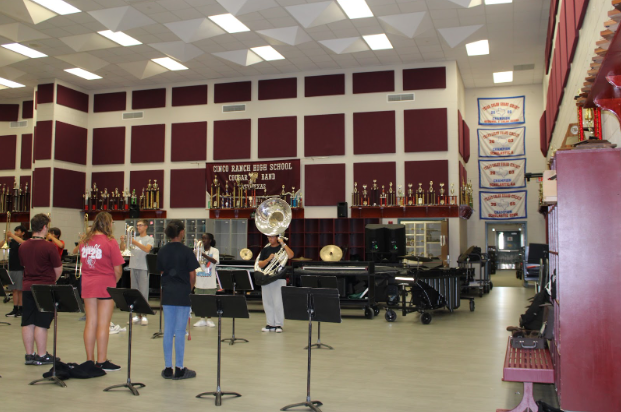Emerging fashion trends are deeply influencing the identity and creativity of students in schools today. From oversized hoodies to sneakers passing down the hallways, and social media places like TikTok are fueling the rise and fall of styles at a fast pace.
This year, among the many hot trends on campus some have been Birkenstocks and Lululemon, which let students express themselves while finding community in the clothes they wear.
“Fashion is more than just clothes; it’s a way for us to express who we are,” C.C, a freshman at Cinco Ranch High School stated.
Her view emphasizes how today’s trends make people more confident and how students in school are much more fashion-conscious this year compared to others..
She said most of the trends this year are toward comfort and, overall, hygiene to match the people of this generation who would like to be in style but still practical.
On the other hand, some students say that with all these new fashion trends, shifts to fast fashion and uniformity instead.
“TikTok influences what we wear-new trends happen every month,” Kian Jameossanaie, a junior at Cinco Ranch stated.
Kian is voicing a fear shared by many: individualism taken advantage of by influencers and companies mass-manufacturing items, flooding the marketplaces with styles that become outdated in no time.
“They milk the trend until it’s practically dead,” he adds, highlighting a cycle of mass consumerism that many students find troubling.
While both statements are impressively argumentative, they shadow the dual trend of fashion among students.
C.C thinks that personal style choices add to the confidence of students and make the environment around them more accommodating since they are acting themselves. She expresses this idea by saying,
“Our style choices often reflect our interests and personalities, making school feel like a safe place,”
She states when asked if she feels school helps kids
which in turn showed that fashion can be very resourceful for self-expression and community building.
On the contrary, Kian’s explanation makes more sense to those who are caught up by the rapid pace at which social media-driven fashion change takes place.
The constant churning of new trends could make one feel like being pressurized to conform to something and therefore students cannot develop their personal style.
Right now, when we think about how people express themselves, can we say students are showing their true selves, or are they just following a passing trend on social media?
Interestingly, most students find a middle ground and balance their choices by using social media to show their styles but are still able to work out their styles.
They curate their wardrobes by mixing trending items with vintage or unique pieces that speak to their personal aesthetics.
This blend would tell a deeper expression of identity, revealing that in the world of fast fashion, individual creativity could thrive.
After all, fashion trends impact student identity in so many ways: serving both for self-expression of one’s individuality and as a means for consolidating into a group.
They may also create that vicious circle when one wants to be like everybody else and consequently feels superficial.
In finding the balance, the student will learn to love current style while still developing individuality.
Yet, as this conversation is enacted, it once again becomes clear: even as trends change, the importance of fashion as a viable factor of forming student identity does not.
Whether through the oversized hoodie or a new sneaker drop, students continue to utilize fashion as an integral component of self-expression.
This is the challenge, however-to make this expression real and reflective of themselves, not a short-lived echo of whatever happens to be the most recent viral trend.
The students carve out their identities within an ever-changing fashion landscape.


